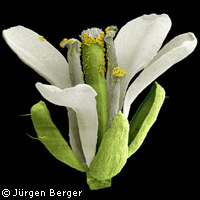How does your garden grow?
A team of EU-funded researchers in Germany has discovered the signalling pathway that is responsible for telling plants when to flower, even when there is no external stimulus such as the beginning of spring. The findings were an outcome of the SIROCCO ('Silencing RNAs: organisers and coordinators of complexity in eukaryotic organisms') project, which was funded with EUR 11.8 million through the 'Life sciences, genomics and health' Thematic area of the Sixth Framework Programme (FP6) to study the functional genomics of silencing RNAs. Every gardener knows that plants often bloom at unexpected times. Spring is the traditional time for a profusion of colour in the garden but sometimes, even on the shortest and darkest days, plants may surprise us by suddenly producing flowers. The research team from the Max Planck Institute for Developmental Biology has explained how this happens. The study showed how plant flowering is triggered by the presence of microRNAs (short snippets of RNA) made in a plant's leaves. Recent studies have shown that microRNA is an essential regulator of gene function in both animals and plants. MicroRNA regulates gene function by binding to complementary motifs in a messenger RNA and thus inhibiting its translation into protein. This process blunts the activity of the corresponding gene. The researchers carried out experiments on a variety of common wall cress called Arabidopsis thaliana (commonly known as 'mouse-ear cress'), which uses this mechanism to switch from vegetative to reproductive development. SPL proteins, which are a related group of regulators, also play an important part in the flowering process of plants. When a plant is young production of SPL proteins is inhibited by high levels of microRNA156. The research team showed that without external stimulators, the levels of microRNA decline over time. When microRNA falls below a certain level, enough SPL proteins are produced to initiate the flowering process. This happens without the presence of other regulators such as the amount of light, sunshine or temperature. The SPL proteins also play another supporting role when plants flower as a response to long hours of sunshine. The SPL proteins and other regulators eventually converge on a similar set of targets that are vital for plants to flower. The results of the study have implications for the world's food-production and plant-biology industries. Flowers go on to produce fruits and seeds, but because plants have always grown, flowered, fruited and died in response to environmental factors, controlling their fertility has been difficult up to now. Discovering the mechanisms by which plants flower means that plant biologists may be able to control the flowering process better so as to breed new varieties of food crops that are capable of producing fruit and seeds in normally inauspicious environments and seasons.
Countries
Germany



